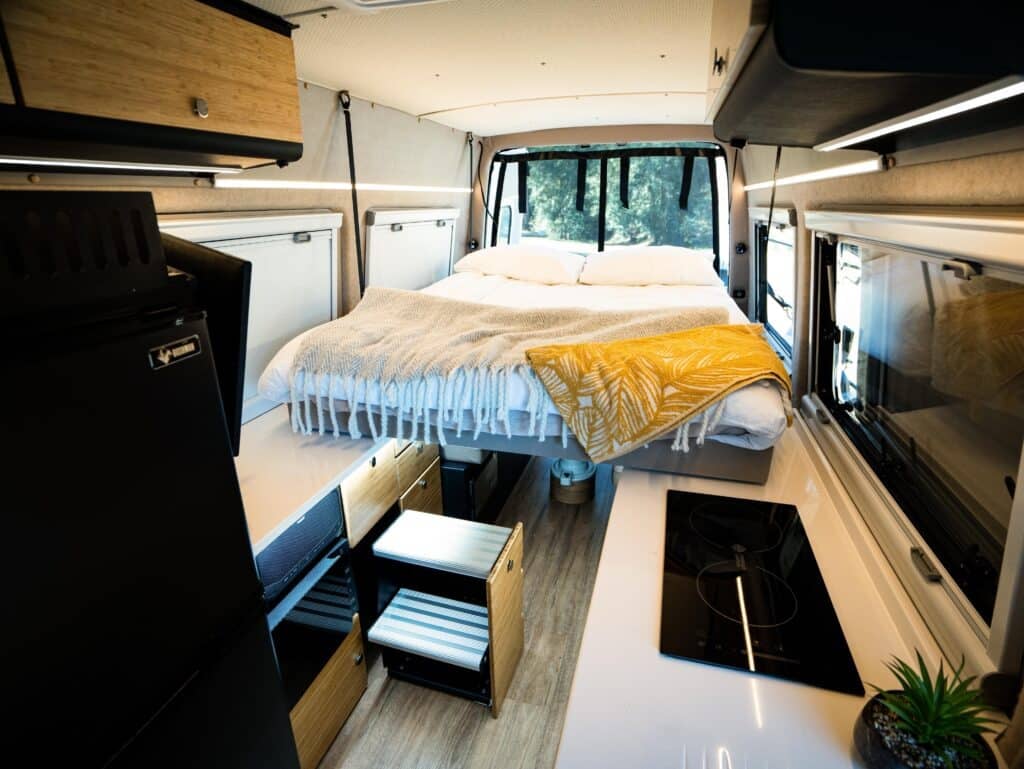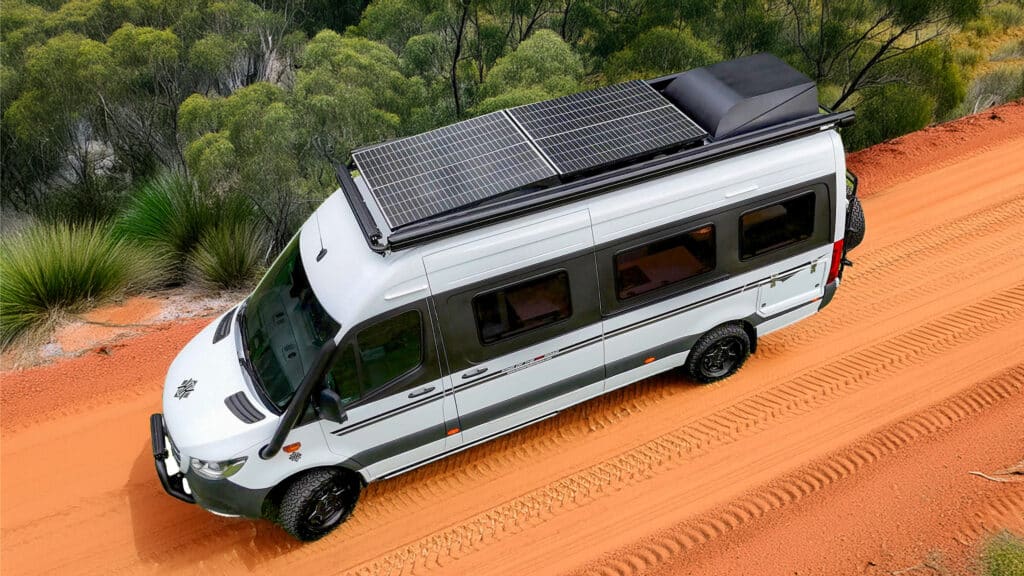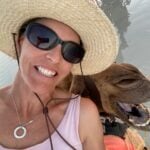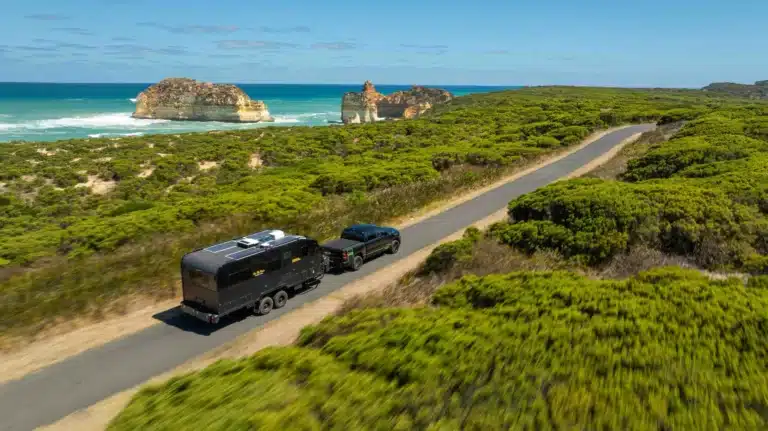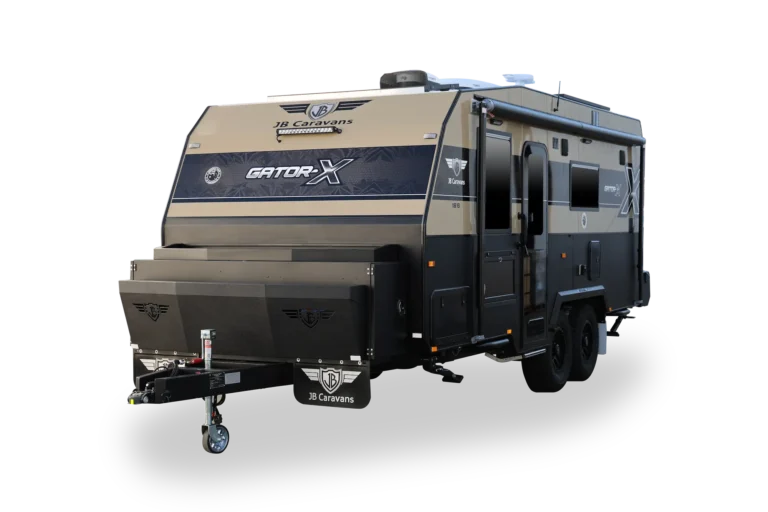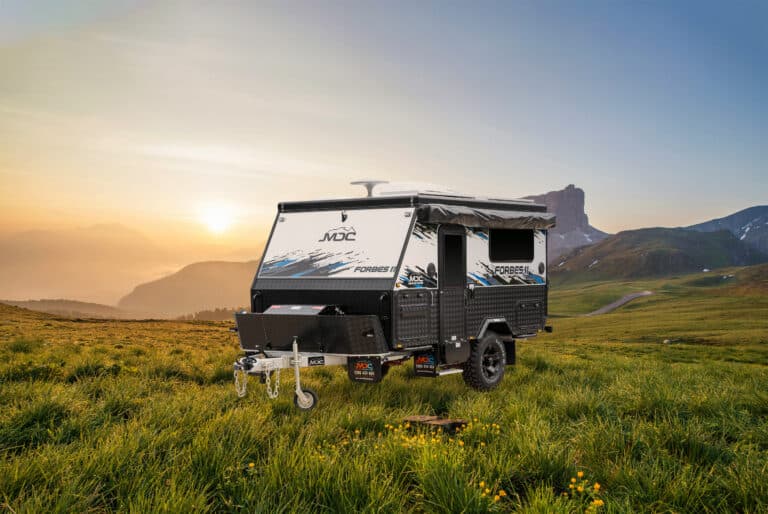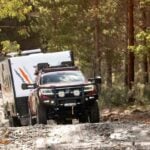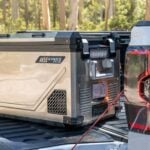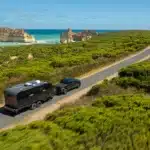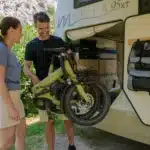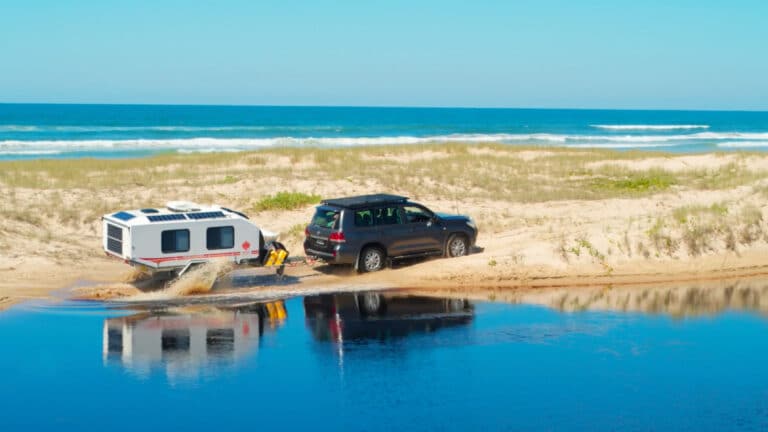
What do NASA space satellites, 11,000 plastic bottles and a bunch of Telstra engineers have in common? They are all part of the Kimberley Kampers evolution coming to a campsite near you. The iconic brand that spent six months in the manufacturing wilderness is celebrating a massive comeback with two new product launches in as many years.
Introducing the Kube, KK’s take on a teardrop camper trailer with 360-degree windows, and the Kruiswagen, a luxury off-road motorhome. Nothing new here, you say. Teardrops and motorhomes have been kicking up the dust for decades. It’s true. But show me another RV that uses super-thin (2mm) lightweight solar panels developed in Silicon Valley – the kind that can be found blipping around the Earth on NASA satellites. Add to that a 48V solar system and composite panels made from 100 per cent recycled plastic bottles, and the Kimberley Kamper builds are something of a unicorn.
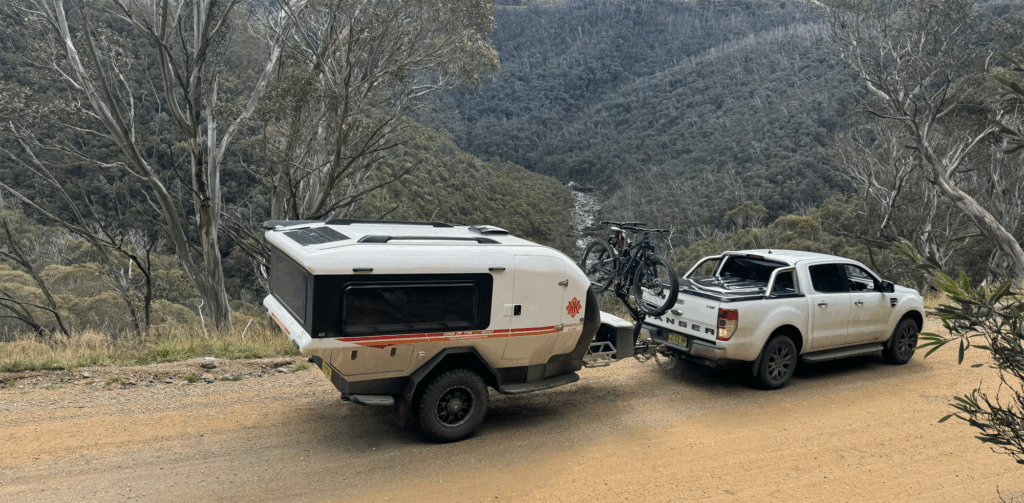
But what about the Telstra engineers, you ask? Well, when the Kube launched in April 2024, Australia’s national telecommunications carrier was so impressed, it put in a $1 million order for a fleet. You can see them zipping down the Red Centre and across the Nullarbor, where the Kubes double as a home and workstation for Telstra engineers servicing some of the country’s most remote telecommunications infrastructure.
Back from the brink
Not bad for a 30-year-old brand brand that almost went under – literally. In late 2018, owner James Cockburn took over the flagging business, based in Ballina in the northern rivers region of NSW. Bushfires and two biblical-sized floods intervened and then there was COVID. When state border closures lifted (Ballina is an hour south of the Queensland border), James was champing at the bit to capitalise on the pandemic-induced boom in RV travel. But the plan was thwarted by supply chain disruptions and severe labour shortages.
To survive long term, James decided to risk-proof the business, bringing almost 100 per cent of manufacturing in-house to protect KK from external shocks. Everything from the chassis to the upholstery is manufactured on site. Then of course there are the composite panels, made by an external supplier from about 11,000 plastic bottles per full-size caravan (about 16,000 for a Kruiswagen) and assembled in the factory. They are slightly heavier than traditional composite but 10 times stronger and fire retardant.
Today, the KK brand is thriving once more, with a team of 60 people manufacturing up to 15 RVs a month, sold at seven dealerships across Australia and exported to 17 countries worldwide, including the US. It helps that James was a corporate accountant in a past life and spent 12 years at the coalface running KK’s flagship dealership, South East Queensland Campers. Before that, he earned his RV chops road tripping across North America for 2.5 years, from the southern tip of Argentina to Alaska, in a Landrover Defender and a rooftop tent. This is a guy who knows his stuff.
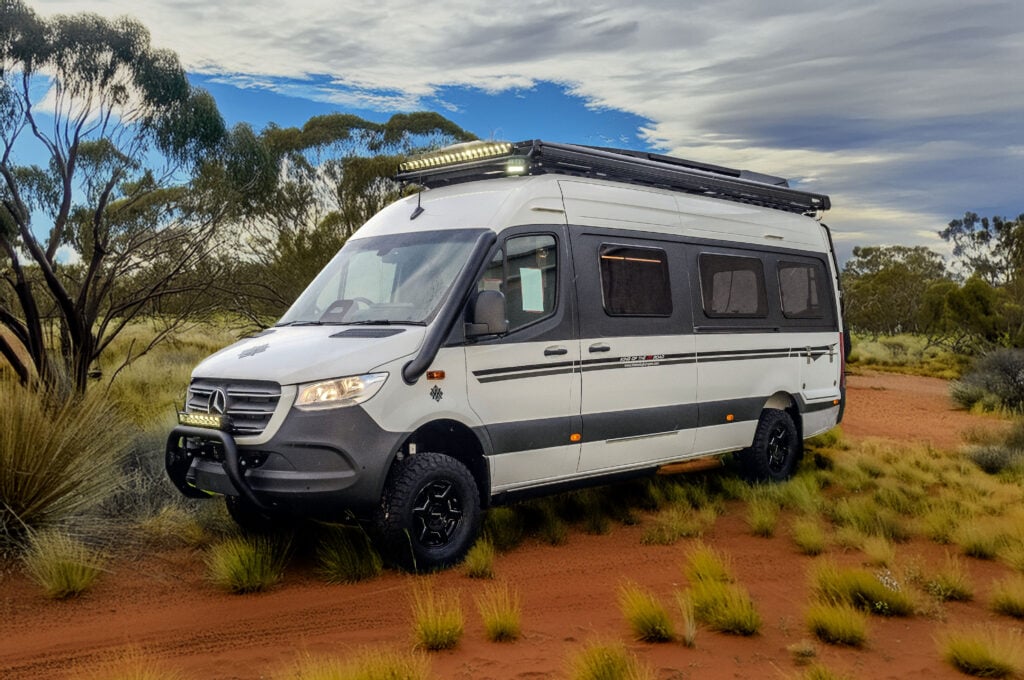
The range
There are nine RVs in the Kimberley Kampers range, starting with the Kube teardrops, priced from $76,865, followed by the cleverly engineered hybrid Karavans, with an electric pop-up hard shell and slide-out king-size bed (from $125,855). Next in the price range are the full-size Kruiser caravans (from $135,800), through to the Kruiswagen motorhomes, with the top-of-the-range Ecoscape starting at $244,340. Launched in 2023, the Kruiswagen has become KK’s best seller. One rolls off the production line every week, but if you want one you will have to wait until next year as backorders have blown out to 12 months.
Designed for off-road and off-grid travel, each KK RV embodies the brand’s ‘travel small, live large’ ethos. Even in the smallest model teardrops you will find up to 400W of solar supported by 460Ah of lithium batteries, while the more expensive models have a 48V EcoFlow power system. Kimberley Kampers are known for their distinctive design. You can recognise a KK RV anywhere by their pindan-dirt red and orange motif, black trims and rounded nose. Failing that, keep an eye out for those Telstra technicians.
Kube (Classic and Ecotrek)
Price – From $76,865
Sleeps – 2
Construction – Monocoque composite shell, aluminium furniture and stainless steel kitchen
Chassis – Hot-dipped galvanised steel chassis, custom air springs, monotube shocks and hydraulic override disk brakes
Power – 400W solar, 200Ah/460Ah 12V lithium batteries
Water – 170L fresh
Length – 5345mm (on road)
Weight – 1100kg tare, 1950kg ATM
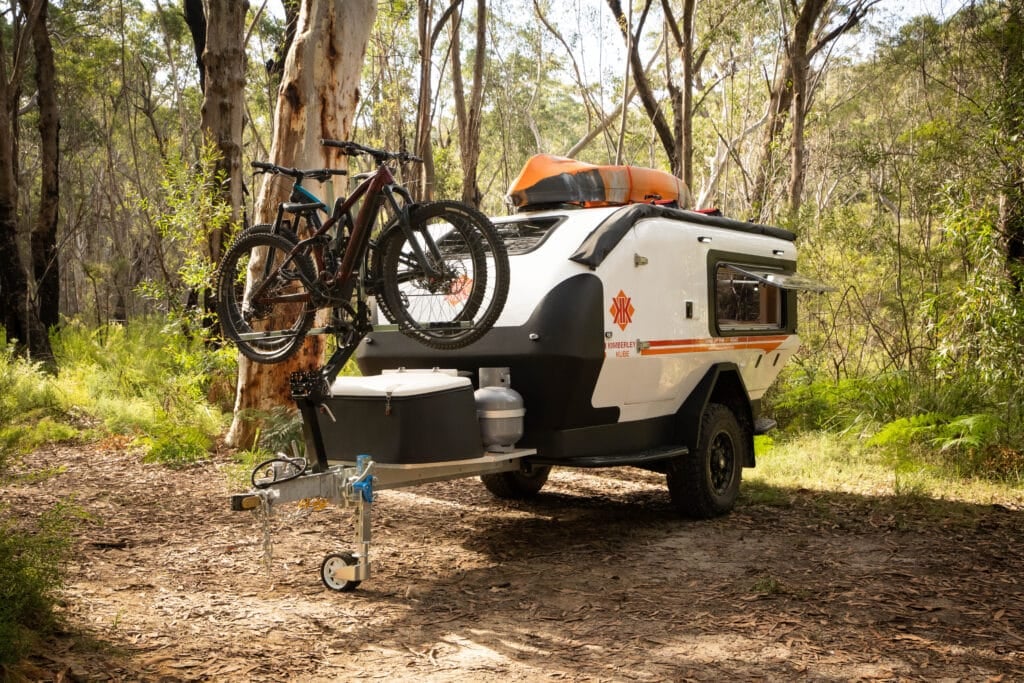
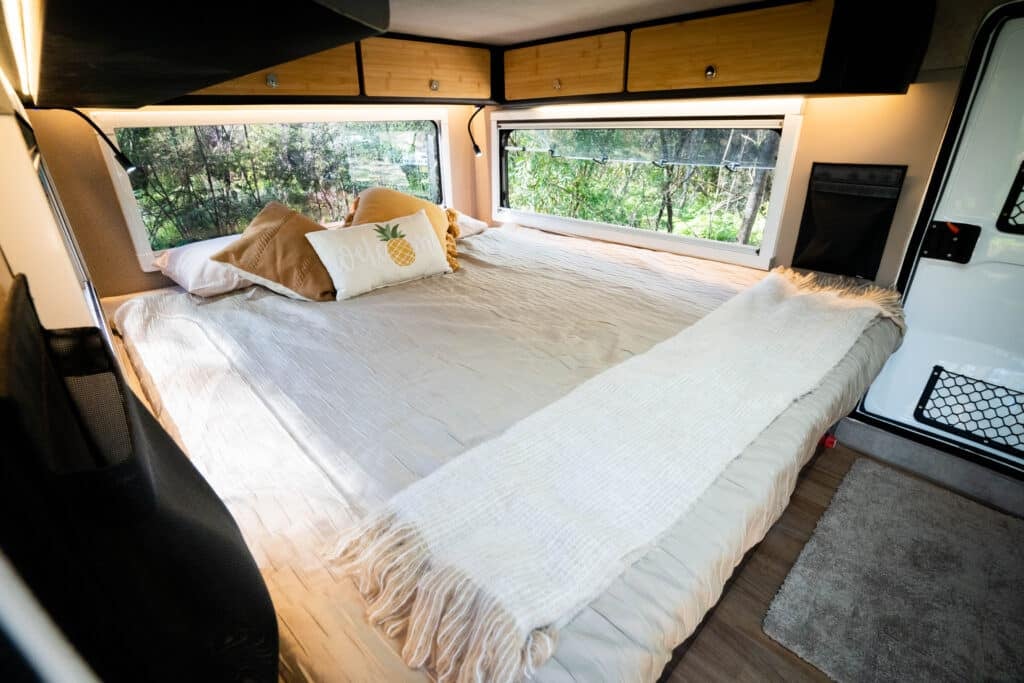
Karavan (Classic and Eco-Suite)
Price – From $125,855
Sleeps – 2-6
Construction – Composite body and fibreglass canopy construction
Chassis – Hot-dipped galvanised steel chassis, independent trailing arm suspension, airbag springs and monotube shocks, electric-over-hydraulic disc brakes
Power – 480W solar, 2000Wh/5000Wh lithium batteries, 3600W inverter
Water – 190L fresh, 60L grey
Length – From 5390m (on road)
Weight – 1580kg tare, 2495kg ATM

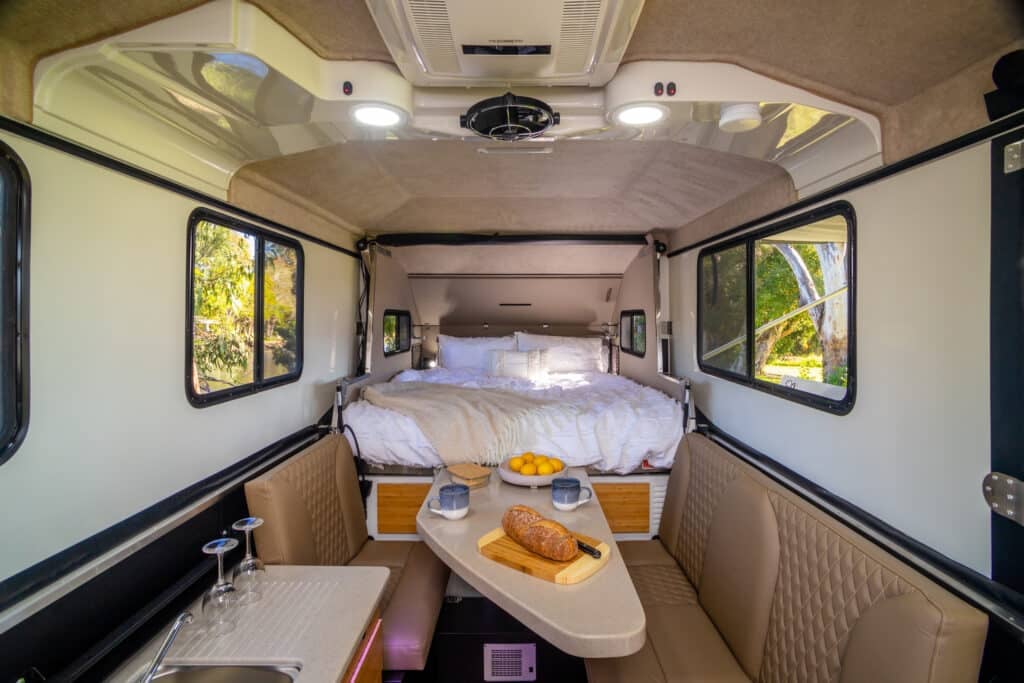
Kruiser
S-Class Classic, S-Class S3 and T3 (double axle)
Price – From $135,800
Sleeps – 2-6
Construction – Composite body with aluminium furniture and stainless outside kitchen
Chassis – Hot-dipped galvanised steel chassis with independent trailing arm suspension, custom air springs and monotube shocks, vented disc brakes
Power – 800W solar, 2000Wh/5000Wh lithium batteries, 3600W inverter
Water – 370L fresh, 60L grey
Length – 6640m-7315m
Weight – 1950kg-2870kg tare, 2925kg-3495kg ATM
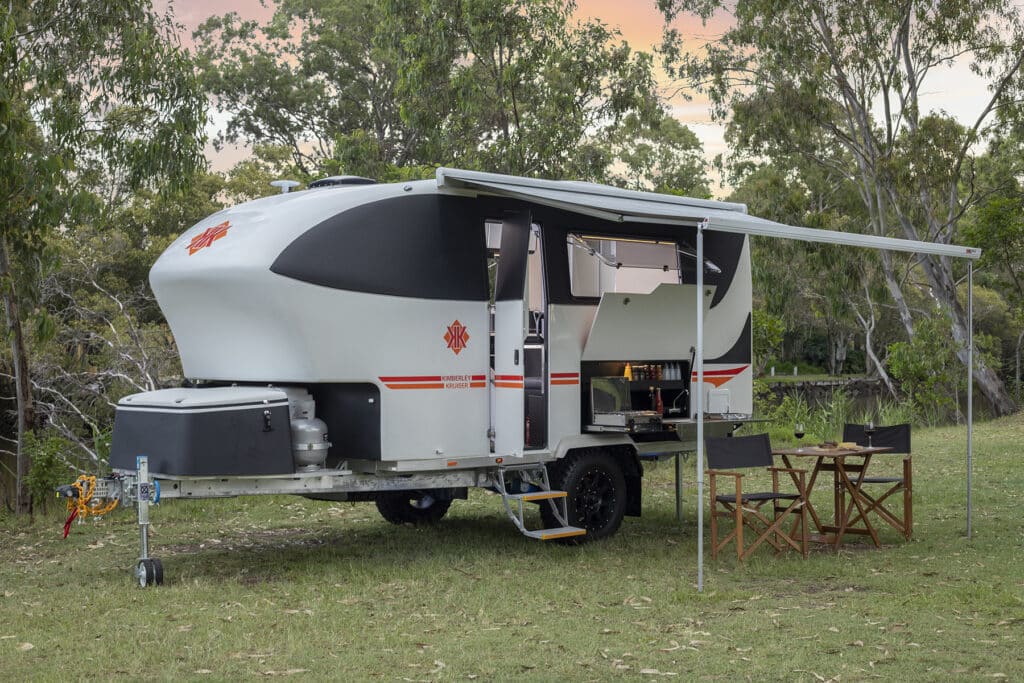
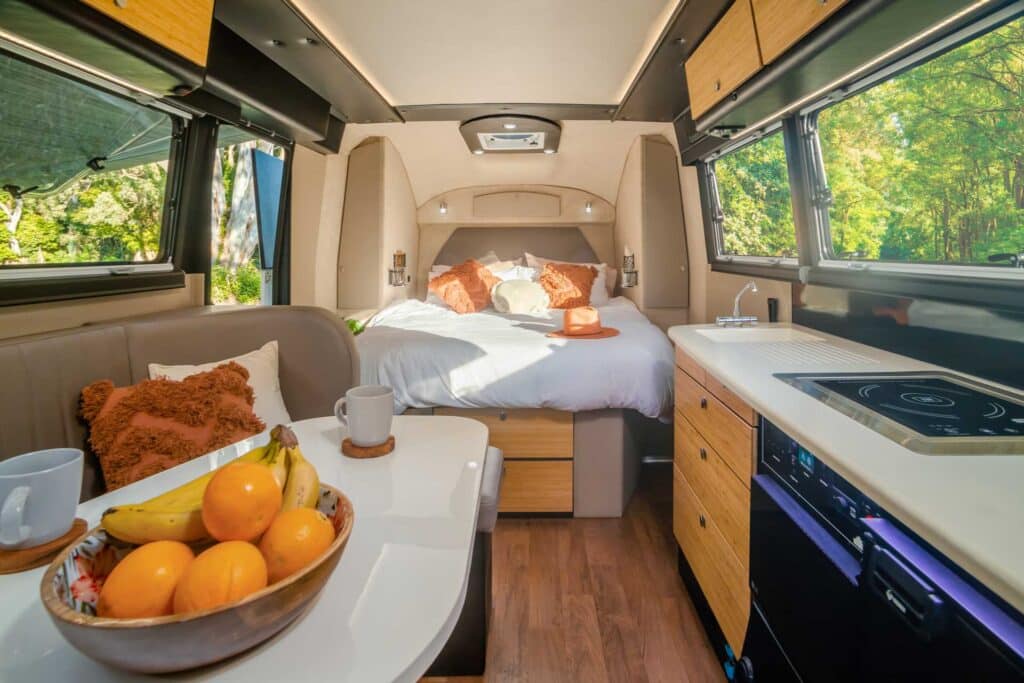
Kruiswagen (Classic and Ecoscape)
Price – From $196,850
Sleeps – 2
Construction – Built on a 2024 Mercedes-Benz Sprinter 419CDI LWB AWD, with composite construction
Power – 400W solar, 2000Wh/5000Wh 48V lithium batteries, 3600W inverter
Water – 196L fresh, 50L grey water
Length – 6967m
Weight – 3610kg tare, 4100kg GVM
